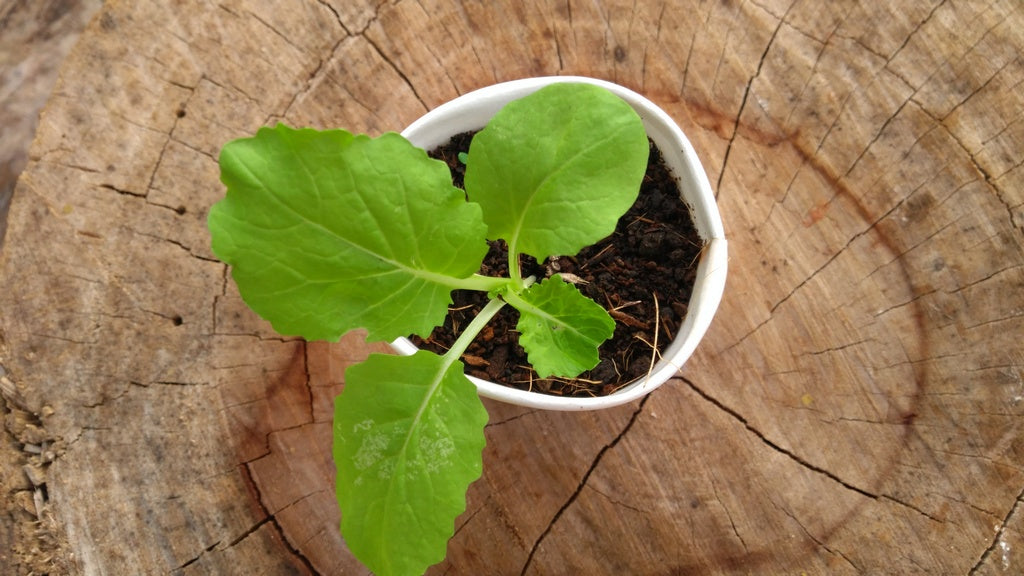The basics of germinating vegetable seeds
Posted by The Seed Store on
A lot of new gardeners experience disappointment when the seeds that they sow with great expectations, fail to germinate. While this can be disappointing, this is no reason for your garden to fail.
Taking care about a few simple things can ensure good results with the germination of your vegetable seeds, whether they are sown in nurseries or directly into garden beds or pots.
1. Are your seeds viable?
The quality of seed is probably the most important factor affecting germination, and the first thing that you need to check if germination failed is the quality of the seed. Keep in mind that sometimes even good seeds fail because they’ve been kept for too long before sowing (especially in warm and humid climates).
A simple test using tissue paper can determine the quality of seed and the germination rate for you. Return the pack to the seller if germination rate claimed does not match your results (and the expiry date has not already passed).
Note: Will post a detailed note on this soon (for now, search for tutorials about this on the web)
2. Is your soil/medium carefully prepared – not contaminated with harmful elements or depleted of all its nutrients?
Seeds (and young seedlings) can be affected by pathogens and other problems in the soil. This is especially true if the growing area is such that water stagnation and moss seem to happen to a great extent. Too much decomposing matter (wood and leaves) in the soil can also cause problems for some more delicate varieties. Compaction in the soil (too much clay) can also stifle the seeds so make sure than you get the medium right.
For quick and certain results, we usually pick some soil from a reasonably dry and healthy patch (33%), add coco soil (33%) and compost (33%) and prepare a soil mix for our nursery beds. Some effort is made to isolate these beds – by placing a plastic sheet under the soil (you need just 3-4 inches of depth for seedlings) and creating boundary of rocks or bricks to hold in the soil. The results (as you can see in the image at the top) are usually excellent with over 90% germination.
3. Have you been watering your seeds appropriately (not too much or too little)?
A lot of the problems with germination are caused due to inconsistent watering or over/under watering. Over watering and inconsistent watering are the most common tendencies especially with new gardeners are will lead to poor germination or weak seedlings that are susceptible to disease. Using a watering can (with a shower head) instead of a pipe and hose will solve most of these problems. The seedlings must be watered very gently or they will get knocked down.
A watering can is a much better tool for young plants and seedlings. Don't use a hard sprayer.
While this should be pretty intuitive to most of us, because it works more or less the same way as with human babies, it surprisingly isn’t.
The idea is for the soil to be kept moist BUT NOT WET at most times. If you see moss growing on the soil surface its a clear sign of over watering. However, If you poke your finger through the soil (just below the surface) and find it moist, you needn’t water again.

4. How deep is your seed sown?
Another frequent mistake is sowing the seeds too deep in the soil. This means that either they do not germinate at all (if germination is influenced by the presence of light/warmth) or they germinate and do not make it to the surface of the soil.
Different vegetable seeds should be sown at different depths – but a general rule of thumb is to ensure that the layer of soil above the seeds in not more than 2-3 times the width of the seed (for a seed of 1mm width, about 3mm deep is ideal).
5. Should I direct-sow or put seeds in nurseries?
This depends, but as a general rule, larger seeds are sown directly (planted in-situ) while smaller seeds tend to be transplanted. There are some exceptions to this however (especially root crops like carrots and radish etc).
In some situations, when we want leafy crops to last for a longer period, we may choose to plant smaller seeds pretty densely.
The list below should help illustrate this and help you decide.
- In nurseries (to transplant) – lettuce, mustard greens, tomato, brinjal, chilly, capsicum, cabbage, broccoli, kohlrabi etc
- Sow direct (in-situ/where it will grow) – cucumber, beans, gourds, corn, radish, carrot, bhindi etc.
Share this post
- Tags: seed germination
